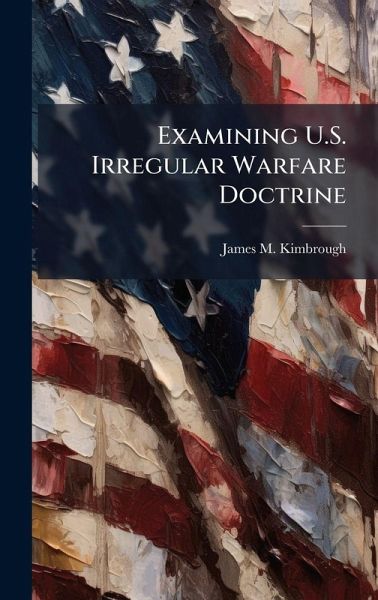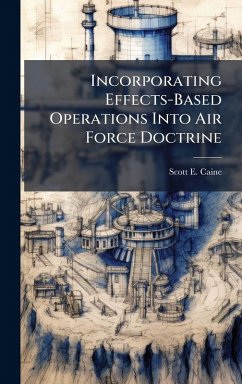
Examining U.S. Irregular Warfare Doctrine
Versandkostenfrei!
Versandfertig in über 4 Wochen
28,99 €
inkl. MwSt.
Weitere Ausgaben:

PAYBACK Punkte
14 °P sammeln!
The United States' overwhelming conventional military superiority has forced its enemies for the foreseeable future to fight it unconventionally, mixing modern technology with the classic techniques of insurgency and terrorism. In response to the associated strategic challenges, a growing debate occurred among military historians, strategists, and leaders about the proper principles necessary for contemporary irregular warfare, particularly against a potential transnational enemy. Without a Joint Publication to serve as a guide, several of the individual services have recently published update...
The United States' overwhelming conventional military superiority has forced its enemies for the foreseeable future to fight it unconventionally, mixing modern technology with the classic techniques of insurgency and terrorism. In response to the associated strategic challenges, a growing debate occurred among military historians, strategists, and leaders about the proper principles necessary for contemporary irregular warfare, particularly against a potential transnational enemy. Without a Joint Publication to serve as a guide, several of the individual services have recently published updated doctrine to address the subject: Air Force Doctrine Document (AFDD) 2-3: Irregular Warfare in August in August 2007 and Army Field Manual (FM) 3-24: Counterinsurgency in December 2006 (jointly published as Marine Corps Warfighting Publication 3-33.5: Counterinsurgency). Joint Publication 3-24: Counterinsurgency has an anticipated release of May 2009. This work has been selected by scholars as being culturally important, and is part of the knowledge base of civilization as we know it. This work was reproduced from the original artifact, and remains as true to the original work as possible. Therefore, you will see the original copyright references, library stamps (as most of these works have been housed in our most important libraries around the world), and other notations in the work. This work is in the public domain in the United States of America, and possibly other nations. Within the United States, you may freely copy and distribute this work, as no entity (individual or corporate) has a copyright on the body of the work. As a reproduction of a historical artifact, this work may contain missing or blurred pages, poor pictures, errant marks, etc. Scholars believe, and we concur, that this work is important enough to be preserved, reproduced, and made generally available to the public. We appreciate your support of the preservation process, and thank you for being an important part of keeping this knowledge alive and relevant.












